How to Build a Firewood Rack
March 28, 2022
Do you need a new firewood rack for your home? Whether it’s for a fireplace inside or the firepit you’ve got in your backyard, you’ll need somewhere to store the wood.
A quick Google search will tell you that firewood racks are expensive. Unless you’re getting yourself a tote bag, most of them are going to cost you more than $100. (Not to mention the ‘honeycomb’ wood holder that was $750. Crazy.)
Instead, why not save yourself some money, put your DIY skills to the test, and make your own! We’ve got a super easy to follow step-by-step guide on how to make your own firewood rack at home. The best part? Our full size, two-section rack cost less than $50.
What You’ll Need
Metal
- 25mm x 25mm x 2mm mild steel square hollow section (you’ll need 4x 1200mm pieces and 4x 300mm pieces)
- 400mm x 400mm x 6mm mild steel base plate
- 25mm x 25mm x 2mm mild steel flat bar (you’ll need 4 pieces)
- (optional) Caster wheels
Tools
- Angle grinder
- (optional) Drop saw
- Orbital sander
- Chalk
- Measuring tape
- Combination square
- Rule
- Right angle magnet
- Clamps
- Degreaser
- Spray paint
STEP 1
Measure and cut your square hollow sections to the required lengths. You’ll need four sections cut to 1200mm in length and another four sections cut to 300mm in length. Make sure when you’re purchasing your metal that the bars are long enough; a 1m bar is going to be too short.
Use your chalk, measuring tape and combination square to mark out the needed lengths along the bar.
STEP 2
Cut your bars. We used a drop saw to do this, but you can also use an angle grinder.
STEP 3
Tidy your metal pieces up. Once the bars are cut, take a grinder and flap disk to the edges to clean them up, smooth them out and make sure there aren’t any burs.
Do the same for your base plate. Run your flap disk over the edges to get rid of any burs. You can also round out the corners of the plate to take the sharp edge off (it’ll hurt less when you accidentally walk into it).
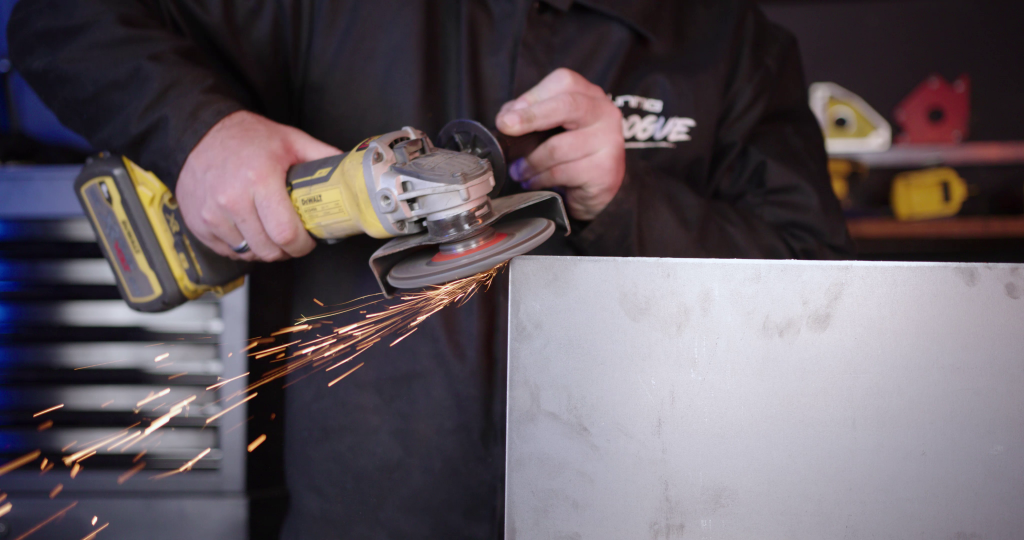
STEP 4
Measure and mark the base plate. Now that everything is smooth, take your chalk and combination square to mark 25mm in from each end of the plate, then use your ruler to draw the lines in. You should have a nice white chalk square on your plate when you’re done. This is so that you can locate the frame.
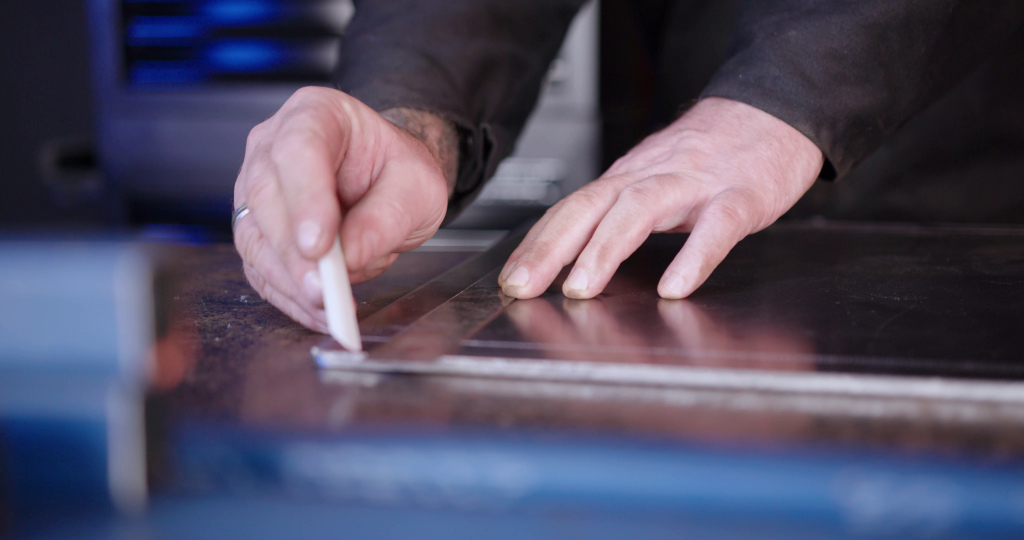
STEP 5
Mark out 300mm at the bottom of the 1200mm pieces of square section. This will give you the cross-bracing locations (where you’ll weld your 300mm length pieces) and serve as a separator between the firewood and kindling parts of the rack.
STEP 6
Now for the exciting part: the welding.
We used the MIG process on our VIPER 185, but you can weld this project together with any method.
Note: If you’re welding dissimilar metal thicknesses, your machine settings should be for the thicker metal. If you’re using a UNIMIG MIG machine, you can find all of these recommended settings inside the machine’s door. You can learn more about welding dissimilar thicknesses here.
To weld these together, we’re going to make two H pieces. Grab two of your 1200mm bars and one of 300mm bars. Place the 300mm bar between the two where you marked out the 300mm line on the 1200mm piece so that you now have an H in front of you.
To make sure everything is squared up, measure diagonally from the top to the bottom of the 1200mm pieces. Both lengths should be the same.
Keep everything in place with a few magnetic right angle clamps and tack the bars together.
Quick tip: When you tack the 300mm bar in, only make a tack on the bottom to start with. Once it’s got the first tack, you can check to make sure your bars are still square. If they’re not, you can snap the tacks off or hammer the bars around a bit and square them back up.
STEP 7
Weld your bars together. When everything is tacked and squared, grab another of your 300mm bars and place it at the top. You should now have a rectangle with some overhang at the top and bottom.
DON’T weld this piece; simply clamp it in place. This will hold your frame still, and the bars won’t be able to bend in or out as much as you fully weld the bottom bars together.
Now you can weld your H frame. Make sure you weld all four sides of the 300mm bar onto the 1200mm bar.
You can unclamp the top 300mm bar once your H is welded together.
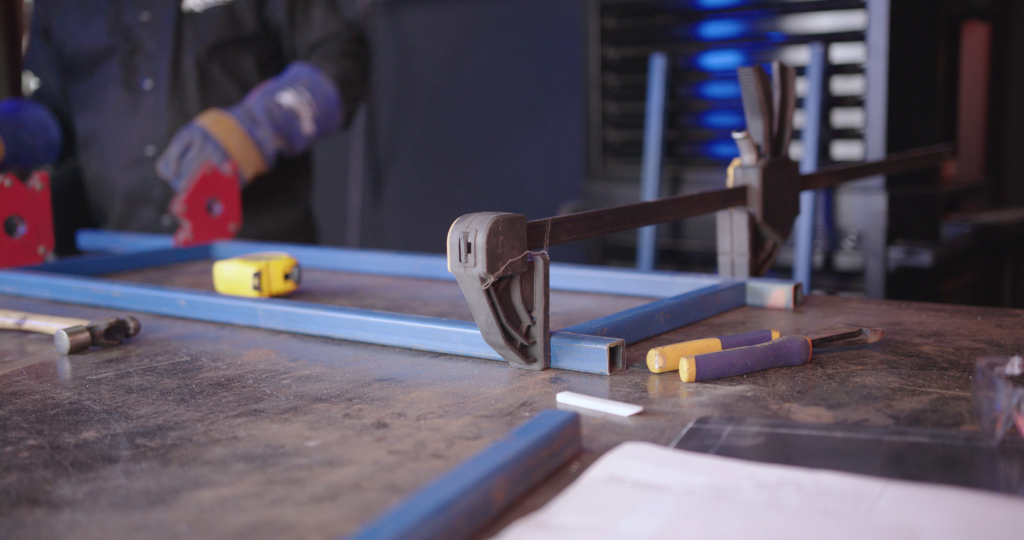
Do steps 6 and 7 twice.
STEP 8
Sand your welds flush. It won’t matter so much for the welds that face up and down (the fillet welds), but sanding the two outside welds (the butt welds) flush with the bar will make the firewood rack look better, and it’ll make your next step easier.
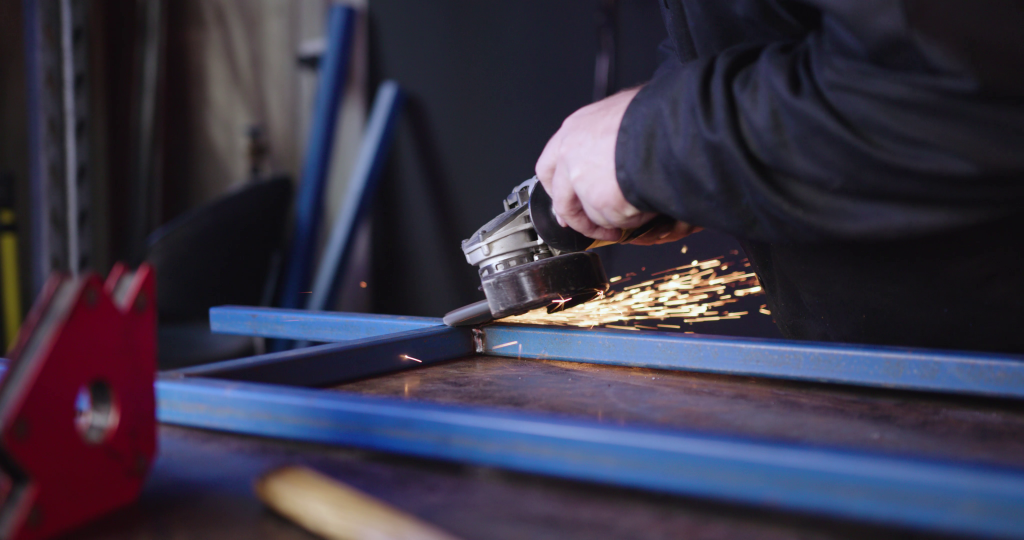
STEP 9
You should now have two H shaped frames.
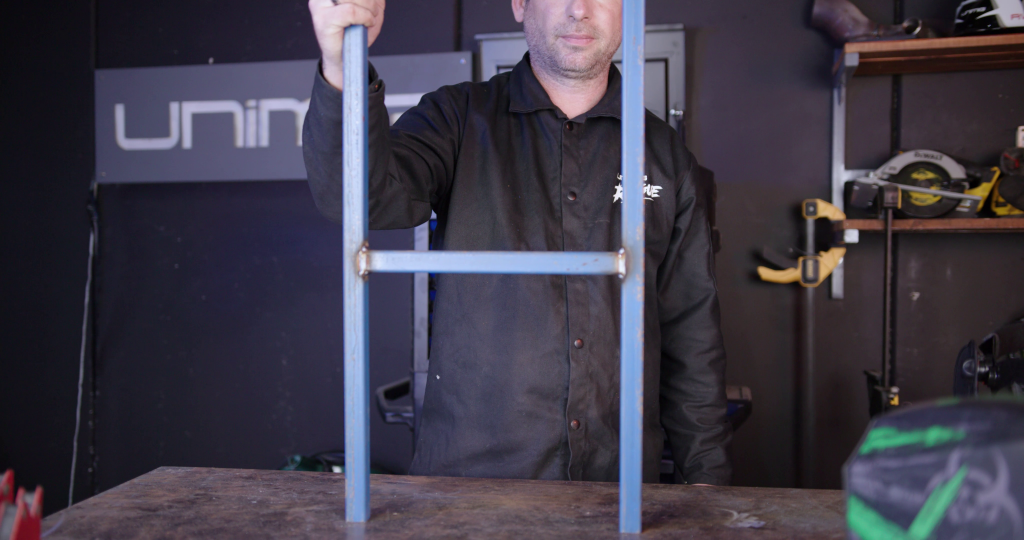
Next, you need to add the cross-sections. With your previous welds sanded flat, your remaining two 300mm bars will line up flush, which is what you want.
Stand your frames up, clamp your cross-sections in place and tack them together. Don’t forget to check your diagonals before and after you tack them in.
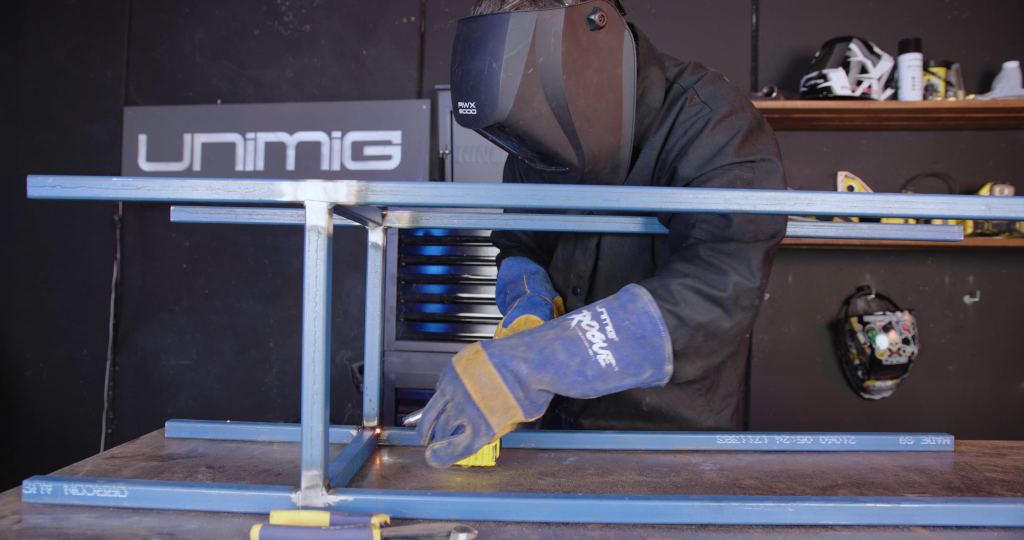
STEP 10
Weld everything together. It’s a good idea to start with the butt welds, check the diagonals, and then do the fillet welds. This will ensure that your frame will still be square once it’s all welded together.
When you’re done, you can repeat step 8 and sand all your butt welds flush.
STEP 11
Attach the frame to the base plate. Line the corners of the frame up with the corners on the base plate, using the markings you drew earlier. Once it’s lined up, you can tack it on.
STEP 12
Weld the frame onto the base plate. After you’ve tacked it, give the frame another check to see that it’s still square, and then weld all four sides of the bar onto the base.
Sand your welds flush once they’re done.
STEP 13
Now to make your end caps. The firewood rack still looks unfinished, with the open-ended tops, so let’s fix that.
Here’s where the 2mm flat bar comes in. Using your combination square and chalk, measure out 25mm x 25mm four times, and cut out some end caps.
Once they’re cut out, you can tack and then weld them into place, sanding the welds to smooth them out when done.
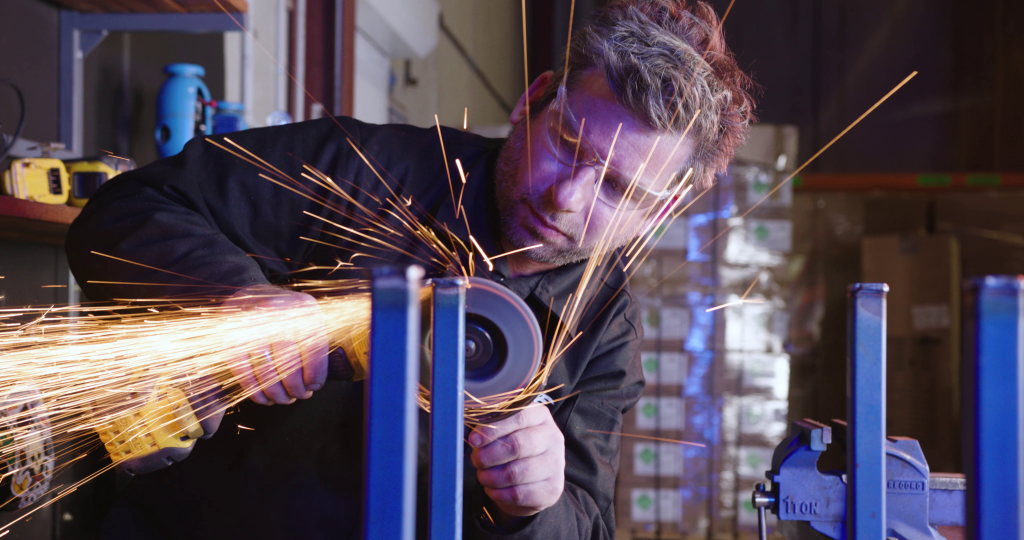
STEP 14 (optional)
Add some caster wheels to the bottom. If you’ve got a set space that you’re going to put the rack, and it’s never going to move again, then you probably don’t need to worry about this step. But, if you’d like to be able to easily roll it around, even after it’s full of wood, you can weld on some wheels.
Line the corner of the wheel’s plate up with the corner of the base plate. Tack it on through the holes. If your wheel’s plate doesn’t have holes, just tack around the edge. Clean the welds up with your flap disk, and now you’re ready for paint.
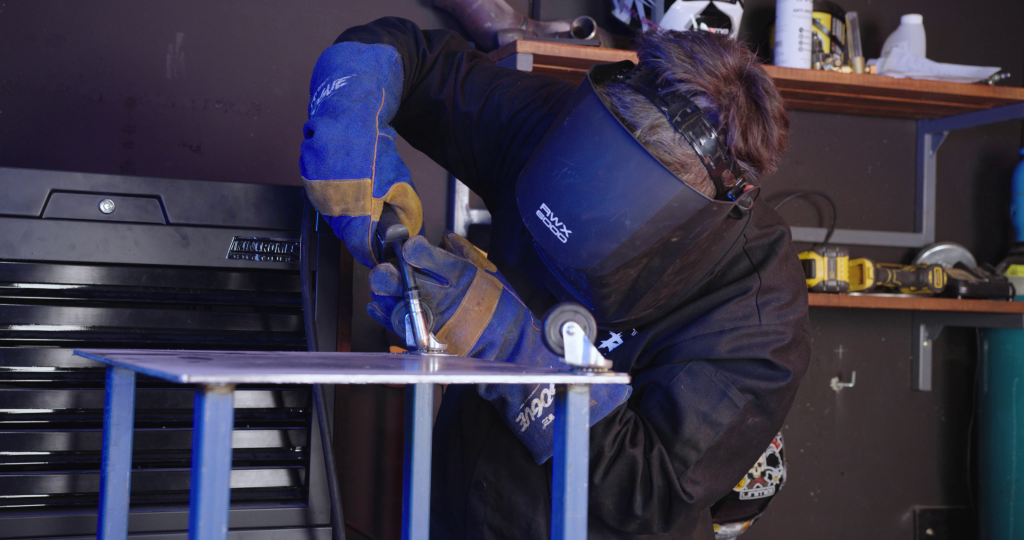
STEP 15
Now that your firewood rack is fully assembled and welded, give it a once over with an orbital sander.
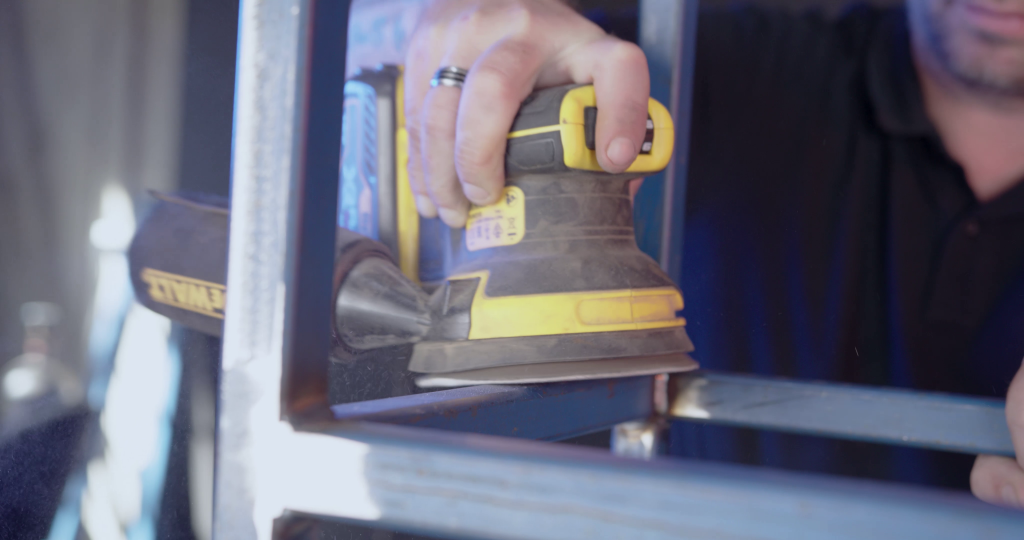
If you’re happy with the rustic, bare metal look, you can go ahead and call it a day here. You now have a completed firewood rack!
If you’re like us, and you like to finish things off with a nice coat of paint, we’ve got one final step.
STEP 16
Paint the firewood rack. But first, wipe it down with some degreaser, then you can grab your spray paint (we used flat black with primer).
And done! Now all you’ve got left to do is chop up some firewood to fill it. Don’t forget to grab some kindling to fill the bottom part as well.
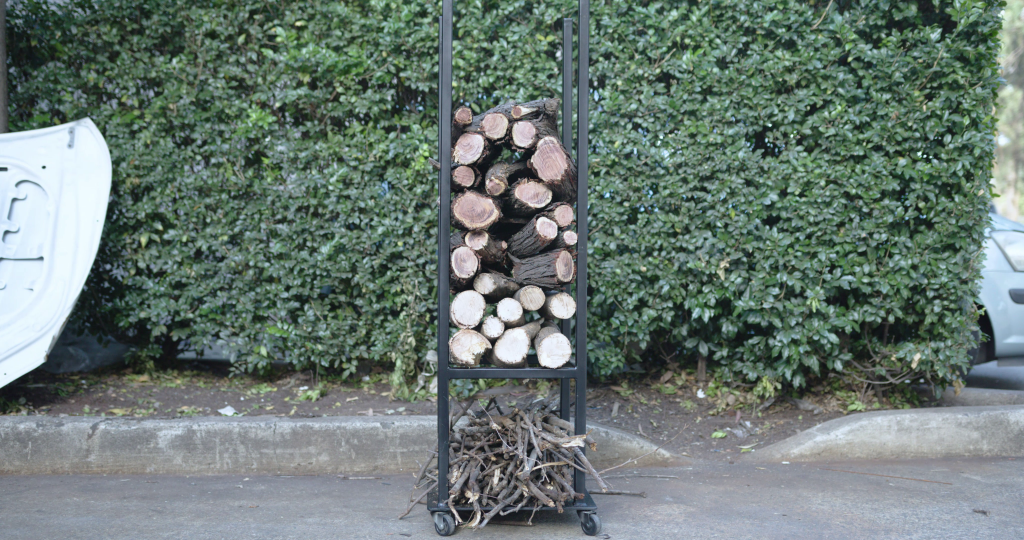
Keep in mind that you don’t have to strictly follow the dimensions we’ve used. Just make sure that if you go for a rectangle or 500mm long cross-section bars, you’ll need to adjust all of your dimensions to fit the frame.